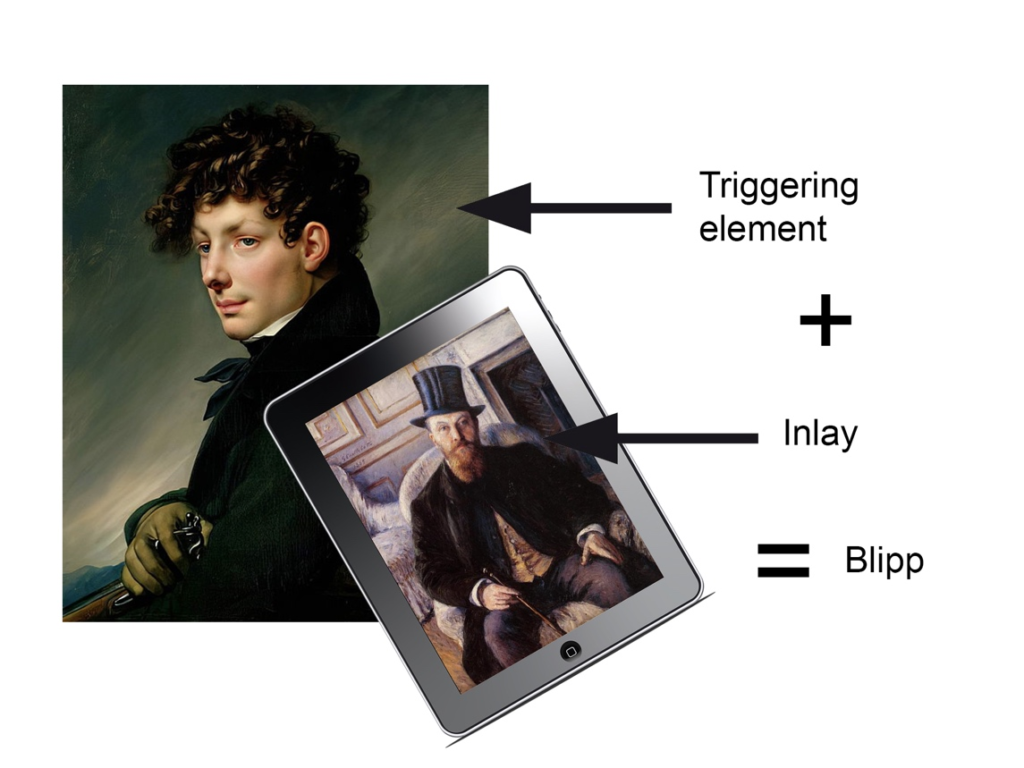Definition of Augmented Reality
Augmented reality (or AR) is a mixture of virtual and real worlds, in 2D or 3D, which enrich reality by superimposing additional information. This technology works through a terminal that uses the real world and inserts live virtual objects, animations, text, data and/or sounds that the user views from the screen. Augmented Reality should:
- Enable superimposition and interaction at the same time
- Combine the real and the virtual, in a transparent way for the user
- Respect the rules of perspective and 3D representation
Augmented Reality makes it possible to enrich reality.
If the effect is correctly controlled, Augmented Reality can have a “magic” side. It allows to replace other special effects that can be more complicated to set up, such as light or sound effects, or smoke, for example.
A few years ago, the use of Augmented Reality in an educational setting was limited to presenting, in front of a webcam, cards with a specific marker recognized by the system. When the marker was recognized, 3D models appeared on the screen and were integrated into the real environment. With the advent of mobile devices such as smartphones and tablets, many applications now use Augmented Reality.
Forms of Augmented Reality
Marker-based Augmented Reality, also called image recognition, uses a camera and a visual marker (QR code, barcode, simple patterns) to show the result.

Augmented Reality can also work with geolocation. The device and its owner are located, thanks to the GPS, and additional information is added to the image sent by the camera. It is commonly used in applications containing location information.

Projection-based Augmented Reality works by projecting elements onto real-world surfaces and objects, detecting and reacting to human interaction. It is then up to the user to match this virtual “overlay” with reality.

The real can also trigger Augmented Reality itself. Augmented Reaility based on superimposition replaces the original view entirely or partially with an augmented view. It works by object recognition, so that it can replace or add to any virtual object.

Of course, each tool has its specificities but it is pretty easy to use. The choice will depend on what you want to set up for your escape room. It is possible to use several of them in the same game and thus, diversify the exploitation of Augmented Reality during a game session.
Using Augmented Reality in an ER
By using Augmented Reality in the development of an ER, you can make all images “digitizable” and thus, associate an action with it, making it richer in information. Here are a few examples of how to use Augmented Reality y in an educational escape room:
- Add additional information (graphics, video, etc.) to the images in a book, manual, etc.
- Associate an image or a sound with a word or a text
- Display an animation, a video of instructions for use, access to a web page
- Show a transparent image to highlight important elements
- View a related quiz
- Display a 3D model that can be manipulated, moved, enlarged, rotated, etc.
- Associate help, a clue, a “helping hand” card
BlipparTool Overview
Blippar is an online platform for creating and reading augmented reality. Blippar generates so-called Blipp, the association between a trigger (which belongs to the real world) and a virtual overlay. By creating a Blipp, you determine which element of the real world (image or object) will trigger the appearance of a virtual element (an image, video or 3D model for example). You place all the content you wish to inlay on the platform.
It is possible to multiply the inlays for the same trigger element and to define a few specific actions. The presentation in the form of scenes, in the manner of a slide show, allows actions to be programmed.

The Blippar online platform allows you (after identification) to create Blipp, while the Blippar application (free), available on tablet and smartphone (under iOS and Android), allows you to read them by scanning. You will need to enter a code (one at a time) to see the augmented reality.
